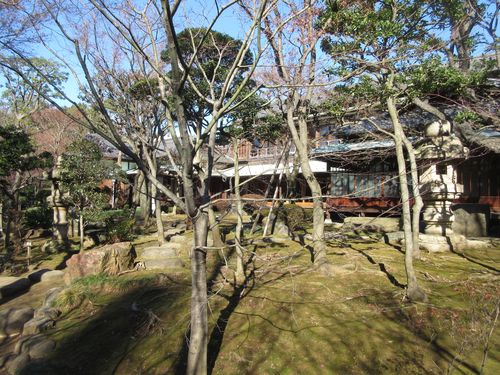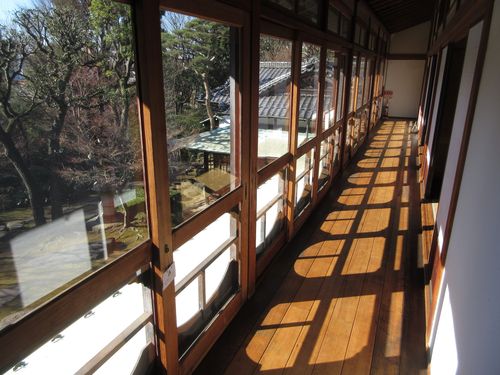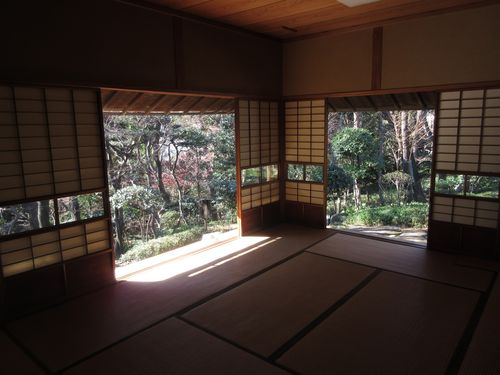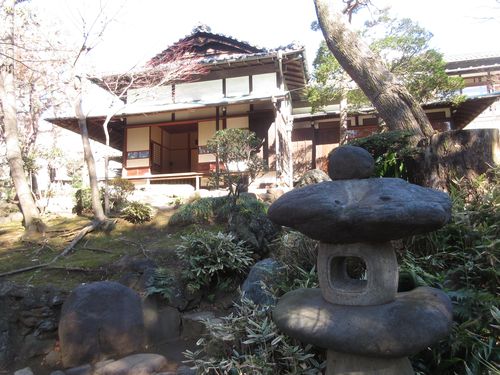Kyu Asakura House: A Stately Manor Hidden in Plain Sight in Trendy Daikanyama
Tokyo has had two major calamities in the last century - the Great Kanto earthquake of 1923, and the fire bombings in WWII - that have robbed the city of many of its historical buildings. However, hidden in the chic Daikanyama area lies a stately manor worth searching out that has survived both calamities: Kyu Asakuara House.
.jpg)
The entrance to the two storied tile roofed residence.
Kyu Asakura House (The word kyu means "former") is the former house of the Asakura family, a notable business family that was well-established in Shibuya Ward. This traditional Japanese style house was built in 1919 by Asakura Torajiro, the then head of the family, who was a leading rice dealer and who later became a local politician. The house is characteristic of the style of mansions built from the Meiji era until the mid-Showa era. It was used by the Shibuya City Assembly for a long time. Then in 2004, the house was designated as an Important Cultural Property by the government..

The rear of the manor viewed from the traditional Japanese garden.
The first floor was used for daily living and if there was a special event, guests would be greeted in the Ohsetsuma (drawing room), located on the left-side of the entrance. There was a Western style room (known as the Yohma) to the right side of the entrance that was used for daily guests and to house the family butler. The second floor was set aside for use as meeting rooms for the various business and local governmental activities undertaken by Torajiro. Throughout the house there are trappings of the Japanese style décor of the period.

The second floor corridor leading to meeting rooms and looking out at the Japnese style garden on the slope in the back of the house.
The Suginoma (cedar rooms) on the west side of the building were used by Torajiro to meet his private guests coming to make their various petitions. These receiving rooms are beautifully designed in the Sukiya-zashiki (a noble style tatami tearoom), which shows off the cedar wood grain and texture.

The exquisite Suginoma cedar rooms look out into the comtemplaitve garden behind the house.
The Japanese garden behind the house traces the cliff line slope in the design of its paths. Along the paths are stone lanterns, landscaped rocks that call to mind a typical Japanese rock garden as well as various other decorative items that draw the eye’s attention as one meanders through the garden. The garden is said to be especially beautiful during the spring and fall seasons, but it can be enjoyed anytime of year.

The Suginoma cedar rooms as viewed from the garden vantage point of a classical stone lantern.
Located only five minutes from Daikanyama and another 10 minutes from Ebisu station, this a nice spot to retreat from the modern world and take a short break from shopping. The visitor can recharge and take in the traditional splendor of a Japanese style house and garden that has persevered unscathed from another tumultuous age.
The Kyu Asakura House Details:
Address: 29-20 Sarugakucho, Shibuya-ku
Telephone: 03-3476-1021
Open hours: (March 1 – October 31 10:00 – 18:00), (November 1 – Feburary 10:00 – 16:30). Closed Monday (Tuesday if Monday is a national holiday) and End-year holidays.
Entrance fee: Adults 100 yen, Junior high and elementary 50 yen.
Access: A five-minute walk from Daikanyama Station on the Tokyu Toyoko Line.
A five-minute walk from Daikanyama Eki bus stop on the Yuyake Koyake Route of the Hachiko Bus.
Website: http://www.city.shibuya.tokyo.jp/eng/est/asakura.html
Note: Not stroller or wheelchair friendly. Also, there is no parking for private cars.
Patrick McCoy is American writer based in Tokyo who has been published in The Japan Times, The Daily Mainichi, The Asahi Shimbun, Tokyo Classified and Eye-Ai Magazine.
See also: Traditional home ideas from ZenVita
Looking for inspiration? ZenVita offers FREE advice and consultation with some of Japan's top architects and landscape designers on all your interior design or garden upgrade needs. If you need help with your own home improvement project, contact us directly for personalized assistance and further information on our services: Get in touch.
SEARCH
Recent blog posts
- November 16, 2017Akitoshi Ukai and the Geometry of Pragmatism
- October 08, 2017Ikebana: The Japanese “Way of the Flower”
- September 29, 2017Dai Nagasaka and the Comforts of Home
- September 10, 2017An Interview with Kaz Shigemitsu the Founder of ZenVita
- June 25, 2017Takeshi Hosaka and the Permeability of Landscape
get notified
about new articles
Join thousand of architectural lovers that are passionate about Japanese architecture